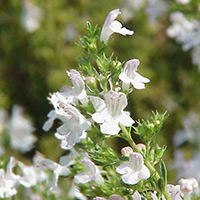 Smart Citations
Smart CitationsSee how this article has been cited at scite.ai
scite shows how a scientific paper has been cited by providing the context of the citation, a classification describing whether it supports, mentions, or contrasts the cited claim, and a label indicating in which section the citation was made.
Bio-organic and inorganic fertilizers modify leaf nutrients, essential oil properties, and antioxidant capacity in medic savory (Satureja macrantha L.)
The present study was carried out to assess the effects of bio-organic and inorganic fertilizers on plant nutrients, essential oil composition and antioxidant capacity of Satureja macrantha L. The experiment included nine treatments viz., NPK (50:25:25 kg ha−1), Vermicompost (VC) (5 t ha–1), NPK +VC, Thiobacillus (T), T+VC, T+sulfur (S) (250 kg ha−1), T+S 500 kg ha−1, Glomus mosseae, and control (untreated plants). The results showed the highest Essential Oil (EO) content and yield were respectively observed in plants treated with the combination of VC and NPK. Total Phenol Content (TPC) in first-year plants treated with VC and second-year plants under NPK+VC were higher than other experimental plants. Total Flavonoid Content (TFC) in second-year plants under the combination of NPK was greater than other plants. N content in first year plants treated with NPK fertilizer / combination of NPK and VC was higher compared to other experimental plants. The highest P content was observed in the NPK application in first year. Gas Chromatography—Mass Spectrometry (GC/MS) analyses revealed that the main constitutes of S. macrantha EO were p- Cymene (16.30-34.64%), γ-terpinene (15.46-33.6%), and Thymol (14.82-43.09%), which had different responses to sampling time and fertilizer treatments.
How to Cite
PAGEPress has chosen to apply the Creative Commons Attribution NonCommercial 4.0 International License (CC BY-NC 4.0) to all manuscripts to be published.

 https://doi.org/10.4081/jbr.2020.8477
https://doi.org/10.4081/jbr.2020.8477




